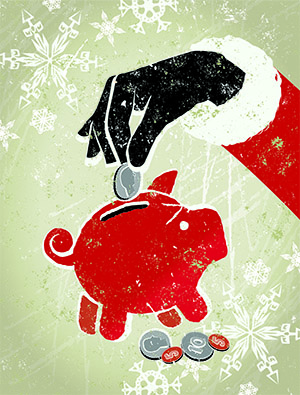Staying Fit
If holiday shopping is sending your credit card bill into the stratosphere, consider opening an old-fashioned Christmas club. Setting aside money in a dedicated savings account can make it easier to budget for gifts and avoid overspending.
Expenses add up as year-end celebrations approach — and you need a plan to manage them. The average consumer expects to spend $998 over the holidays this year, according to the National Retail Federation, down $50 from 2019. The bulk of that ($650) will go to gifts, while the rest will go toward food, decorations and other holiday-related purchases.


AARP Membership— $12 for your first year when you sign up for Automatic Renewal
Get instant access to members-only products and hundreds of discounts, a free second membership, and a subscription to AARP the Magazine.
People may swear that they start saving for Christmas in January, but it doesn't always work out. A set of new tires, a lost job or a dead furnace can deplete the best-intentioned savings. Faced with giving little Jimmy a nice holiday card or a new toy, most people go for the toy. And for many people, that means pulling out the plastic. The average American charged $1,325 during the holidays last year, according to MagnifyMoney's annual postholiday survey.
"Half of Americans already have credit card debt, and the average [credit card] balance is about $6,000, so if you're going to pile another thousand dollars on top of that, it's meaningful,” says Ted Rossman, industry analyst at CreditCards.com. “If you're financing that at 16 percent — the national average credit card rate — and you're only making minimum payments, that's going to keep you in debt for almost five years.” You'll pay about $460 in interest on the extra $1,000 you charged for the holidays, Rossman says.


Holiday helper
A far better solution is to have cash on hand for the holidays. While it's too late for most people to start saving for holiday shopping this year, you can start saving now for next year. One of the easiest ways is through a holiday savings account, sometimes known as a Christmas club.
Holiday clubs are simple: Your bank or credit union automatically takes a set amount from your checking account at regular intervals (say, every week or every month) and puts it into a savings account. When the holiday season approaches, the money returns to your checking account, and you can use that money for your seasonal shopping. If you started an account in January and put away just $100 a month, you'd have $1,000 at the end of October, plus a bit of interest.
You'll measure your interest in pennies, not dollars, because interest rates are so low: A typical savings account pays 0.08 percent, according to Bankrate.com. But saving for the holidays is a short-term goal, and you need to keep your money safe. You don't want a 35 percent drawdown in the stock market to affect your holiday plans.



































































